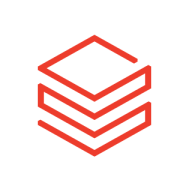

Find out what your peers are saying about Snowflake Computing, Microsoft, Google and others in Cloud Data Warehouse.
| Product | Market Share (%) |
|---|---|
| Databricks | 8.3% |
| Snowflake | 17.7% |
| Dremio | 9.4% |
| Other | 64.6% |
| Product | Market Share (%) |
|---|---|
| Looker Studio | 3.0% |
| Microsoft Power BI | 24.3% |
| Tableau Enterprise | 20.6% |
| Other | 52.099999999999994% |


| Company Size | Count |
|---|---|
| Small Business | 25 |
| Midsize Enterprise | 12 |
| Large Enterprise | 56 |
| Company Size | Count |
|---|---|
| Small Business | 6 |
| Midsize Enterprise | 3 |
| Large Enterprise | 5 |
Databricks is utilized for advanced analytics, big data processing, machine learning models, ETL operations, data engineering, streaming analytics, and integrating multiple data sources.
Organizations leverage Databricks for predictive analysis, data pipelines, data science, and unifying data architectures. It is also used for consulting projects, financial reporting, and creating APIs. Industries like insurance, retail, manufacturing, and pharmaceuticals use Databricks for data management and analytics due to its user-friendly interface, built-in machine learning libraries, support for multiple programming languages, scalability, and fast processing.
What are the key features of Databricks?
What are the benefits or ROI to look for in Databricks reviews?
Databricks is implemented in insurance for risk analysis and claims processing; in retail for customer analytics and inventory management; in manufacturing for predictive maintenance and supply chain optimization; and in pharmaceuticals for drug discovery and patient data analysis. Users value its scalability, machine learning support, collaboration tools, and Delta Lake performance but seek improvements in visualization, pricing, and integration with BI tools.
Google Looker Studio is a free tool designed to help users create visually appealing reports and dashboards, making data easier to understand. It allows you to connect to various data sources such as Google Analytics, Facebook Ads, and spreadsheets. With Looker Studio, you can create charts and graphs to showcase trends and comparisons, build comprehensive dashboards that provide an overview of your data, and customize reports to match your brand or preferences. Additionally, you can share your reports online or export them as PDFs for wider distribution.
We monitor all Cloud Data Warehouse reviews to prevent fraudulent reviews and keep review quality high. We do not post reviews by company employees or direct competitors. We validate each review for authenticity via cross-reference with LinkedIn, and personal follow-up with the reviewer when necessary.